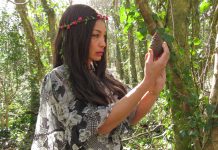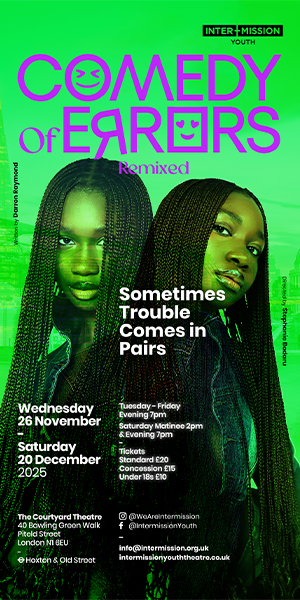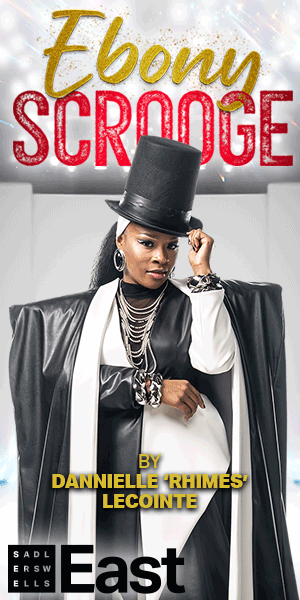
Described in The Living Tradition as “captivating, bold and striking” Cohen Braithwaite-Kilcoyne is at the forefront of his generation of folk musicians. A commanding singer and instrumentalist, Cohen –“brilliant” (The Guardian) – burst onto the scene in his teens, notching up a string of awards and nominations, including a nomination for the BBC Radio 2 Folk Awards Horizon Award.
In this one-night gig at Cecil Sharp House (a short walk from Camden Town tube) next week, Cohen will be performing from his third solo album, ‘Play up the Music!’, which explores Caribbean and African American versions of English folk songs, showing how classic stories of human relationships and the turbulence of existence can have currency across cultures.
This is the first time I’ve spoken to an Anglo concertina and melodeon player. How did you get into playing these instruments?
Anglo concertina and melodeon are my main instruments these days, I started playing the concertina when I was 12 then the melodeon came along when I was 13, but my first instrument was the violin, which I started learning at school when I was 6. I started really getting interested in learning fiddle tunes on the violin when I was around 10 (mostly Scottish and Irish tunes to start with, then the English material came shortly after). #
Through going down the rabbit hole of fiddle tunes, I discovered the folk scene in England, and pretty much dove straight into it, I managed to persuade my parents to take me along to folk festivals and gigs and sessions. Going along to folk events, I quickly found myself surrounded by squeezeboxes of all kinds, and I was absolutely fascinated by them and their distinctive full and strident sound, they really spoke to me in a way that no other instrument had before. Once the concertinas and melodeons came along, the violin fell by the wayside and the squeezeboxes have been my main musical focus for the past 15 years or so.
Congratulations on your third solo album ‘Play up the Music’, why did you choose that title?
When I was researching the album, I spent a lot of time reading Anansi stories, the traditional folk tales of Anansi the spider which have so much significance in Caribbean and African American culture. The stories often have a musical element to them with many of the stories containing little snatches of songs (in fact there are two songs on the album that relate to Anansi stories). ‘Play up the Music’ is a catchphrase of Anansi in one or two stories (essentially meaning “it’s time to strike up a tune”) and I just thought it was such a wonderfully colourful turn of phrase and had a fitting relevance to this repertoire that I had to borrow it for the album title.
Tell us about how you went through the process of exploring Caribbean and African American versions of English folk songs.
Nobody to my knowledge has published any books focusing specifically on Caribbean and/or African American versions of English folk songs, but over the past 150 years or so, there have been a huge number of books published dealing broadly with Caribbean and Black American music and these were my starting point for this research. Some of these song books are still in print, but the vast majority have been out of print for decades, so I spent a huge amount of time scouring libraries and second-hand book shops (both online and brick-and-mortar) for books of Caribbean and Black American songs.
Of course, these books tended to focus on the full gamut of Black musicmaking in the Americas, but there would often be a couple of songs in there that were either recognisably English in origin or else had some kind of connection to the English folk song canon, and having worked mainly in the field of English folk song for the past 15 years, I developed a keen eye for catching these songs. I also did a lot of diving into online archives, especially the archives of the English Folk Dance and Song Society (where a huge amount of the field notes of English folk song collectors from around 100+ years ago are available to view freely online) and the archives of the Library of Congress in America (the sound archives featuring recordings that Alan Lomax made of singers from the Caribbean in the mid-20th century were especially useful).
How is the tour going and what has the reception been like to your third album in comparison to the others?
At the time of writing, I’m five dates into the 14-date tour and it’s been going really well, some lovely audiences and a few sold out gigs, which is always great. I’ve been road-testing a lot of the material that features on the new album at gigs over the past 18 months or so, just including the odd couple of songs during a full setlist to tease the album. I remember being really nervous about how people would respond to these the first couple of times I played them in public – whether people would feel it was too big a departure from the English material that I’ve become known for on the folk scene over my career, but the response, right from the beginning was overwhelmingly positive which gave me a lot of confidence when putting the album together and when beginning this tour.
The album has been very well received to date, I’ve had some amazing feedback from my core fanbase and received some lovely message of support from them, it’s also generated some amazing press response not only in the folk press, but I also had a lovely feature in the Guardian relating to the album and my wider musical work.
It’s still relatively early days (the album isn’t being officially released until 4th October) but based on the response so far, I think this is going to be my most successful album to date.
Not many folk musicians look like you, it’s great to see you challenging perceptions on who can be a folk musician. How to do you navigate being in that space?
Often if I’m at a gig (either performing or in the audience) or any other event on the folk scene, I am aware that I am the only non-white person present, but truthfully that has never been something I have let bother me particularly. The vast majority of people on the folk scene are incredibly warm and welcoming and it is rare that I feel that anybody has been actively hostile towards me. Although I might come from a different background to everyone else in the room, we all share one crucial thing, that being our love of folk music, and music can be one of the most powerful unifiers.
What’s a typical day in the life Cohen Braithwaite-Kilcoyne look like?
One of the most exciting things about this job is that every day is completely different. When I’m at tour as I am at the moment, it involves spending a huge amount of time on trains travelling from one gig to the next. The travel can be exhausting, but the reward of getting to sing for lovely audiences at the end of the day makes it all worthwhile. This is a solo tour, so I’m travelling around on my own, but I also tour and play in other line-ups (each with their own unique repertoire which can make things challenging!) – after this tour I’m out with my band Granny’s Attic through the autumn which will be very different but equally enjoyable.
When I’m not on the road, my time at home is divided between teaching work (mostly one-on-one work teaching concertina and melodeon), trying to find time to research and practice new material, composing, and doing general musician admin (invariably a job that takes up far too much time!). I’ll also usually have a few at any one time; I’ve done quite a bit of work in musical editing (to date being involved in three songbooks and a concertina tuition book) and a big project at the moment is working on a book of traditional songs from Yorkshire – that’s taking up quite a bit of my ‘spare’ time at the moment. All that means I’ve constantly got loads in the air at any one time, with very little time left for non-musical activities!
Quick fire…
Earliest memory of performing in front of a crowd
First public gig was at the Bell Inn in Worcester in May 2007 playing fiddle tunes to an audience of about 10 people (mostly the other performers!) – I would have been 11 at the time. Before that would have been playing in school assemblies, probably from the age of about 6.
If anything was possible, who is the person you would love to see you perform on 2 Oct at Cecil Sharp House, dead or alive?
Dead, maybe Cecil Sharp himself, it is his house after all!
Tip for the next generation of folk musicians of colour?
Stick at it, if you are passionate about folk music, then there is a place for you on the folk scene! The more of us there are on the folk scene, then the more we can do to make other people of colour feel welcome and included (both as performers and as audience members).
Need to know: Cohen Braithwaite-Kilcoyne | 2 Oct | Cecil Sharp House, 2 Regent’s Park Road, London NW1 7AY




























